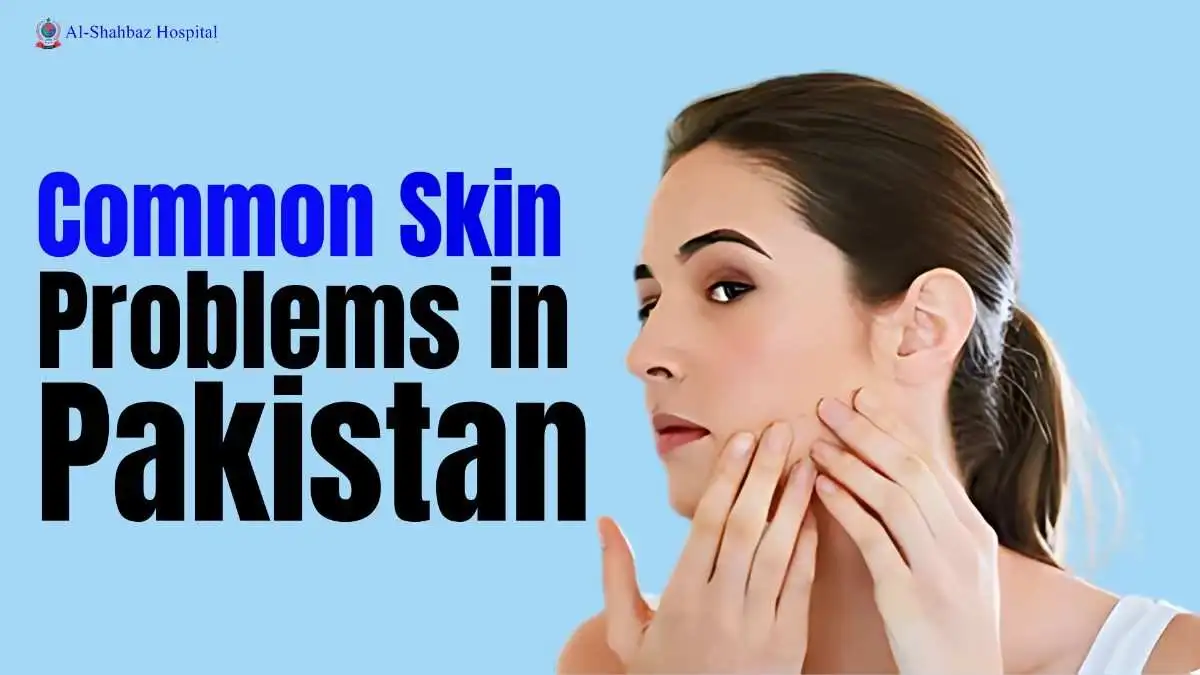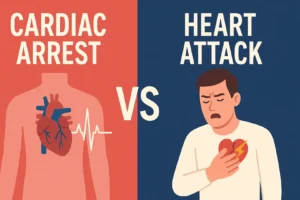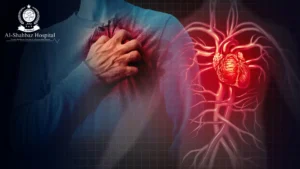Understanding Skin Diseases in Pakistan
Pakistan faces a significant burden of skin diseases, with dermatological conditions affecting millions of people across the country. From urban centers like Karachi and Lahore to rural areas in Punjab and Sindh, skin problems represent a major healthcare challenge that impacts quality of life and economic productivity. A study highlights that skin conditions are the second-leading cause of disability in the country, with scabies affecting about 18–45% of the population ( Scabies & skin disease burden in Pakistan).
Statistical Overview of Skin Diseases in Pakistan
Recent studies from tertiary care hospitals in Pakistan reveal alarming statistics about skin disease prevalence. Eczema was the most common skin disease seen in our study, followed by dermatological infections (ScienceDirect). According to research conducted in Lahore, Out of 95,983 patients, 31.07% were diagnosed with eczema, followed by fungal, viral, and bacterial infections in 28.16%, highlighting the massive scope of skin-related healthcare needs in Pakistan. (MDPI)
Studies have shown that scabies is the most frequent skin condition in Pakistan. Other prevalent skin conditions include acne, fungal infection, and psoriasis. The burden is particularly heavy among children, with approximately 29% of the children having infectious skin disease, with pyoderma the predominant diagnostic category in rural Punjab villages. (PubMed)
Top 5 Most Common Skin Problems in Pakistan
1. Scabies: The Leading Skin Condition
Prevalence and Impact: Scabies remains the most frequently diagnosed skin condition in Pakistan, affecting people of all ages and socioeconomic backgrounds. This highly contagious parasitic infestation is caused by the Sarcoptes scabiei mite, which burrows into the skin, causing intense itching and characteristic rash patterns. Affects 15–45% across Pakistan, particularly in overcrowded, low-hygiene communities. (Memo Medical Institute hospital)
Symptoms:
- Intense itching, particularly at night
- Red, inflamed bumps and rashes
- Visible burrow tracks on the skin
- Secondary bacterial infections from scratching
- Commonly affects areas between fingers, wrists, elbows, and genital areas
Treatment Options: Ivermectin is a powerful antiparasitic drug that is effective in treating other parasitic diseases. In Pakistan, Ivermectin Therapy is used to treat Scabies and represents a modern approach to treatment. Traditional treatments include:
- Topical Permethrin 5% Cream: Applied to the entire body from the neck down
- Oral Ivermectin: Especially effective for widespread infestations
- Crotamiton Cream: Skin specialists in Pakistan recommend Crotan (Crotamiton) Cream 10% 20 gm to eliminate mites
- Benzyl Benzoate: Traditional but effective treatment option
Prevention Strategies:
- Regular washing of clothes and bedding in hot water
- Avoiding close contact with infected individuals
- Maintaining good personal hygiene
- Treating all the household members simultaneously
- Proper disinfection of living spaces
2. Eczema (Atopic Dermatitis): The Chronic Challenge
Statistical Significance: Eczema represents the most common skin disease in Pakistani healthcare settings, affecting over 31% of patients in major hospitals (Tertiary Pakistan hospital patterns). This chronic inflammatory condition significantly impacts quality of life and requires long-term management strategies.
Types of Eczema Common in Pakistan:
- Atopic Dermatitis: Most common in children and adolescents
- Contact Dermatitis: Often triggered by local allergens and irritants
- Seborrheic Dermatitis: Particularly common in hot, humid climates
- Dyshidrotic Eczema: Affecting hands and feet
Symptoms and Manifestations:
- Dry, itchy, and inflamed skin
- Red, scaly patches
- Weeping or crusting lesions
- Skin thickening from chronic scratching
- Secondary bacterial infections
Treatment Approaches:
- Topical Corticosteroids: First-line treatment for inflammation
- Moisturizers and Emollients: Essential for maintaining the skin barrier
- Antihistamines: For controlling itching
- Immunomodulators: Tacrolimus and pimecrolimus for sensitive areas
- Phototherapy: For severe, resistant cases
Management Strategies:
- Identification and avoidance of triggers
- Regular moisturizing routines
- Stress management techniques
- Dietary modifications when food allergies are involved
- Climate control and humidity regulation
3. Fungal Infections: A Persistent Problem
Prevalence and Types: Fungal infections rank as the second most common category of skin problems in Pakistan, affecting 28.16% of patients in major hospitals. The warm, humid climate creates ideal conditions for fungal growth and transmission.
Common Fungal Infections:
- Tinea Corporis (Ringworm): Circular, scaly patches on the body
- Tinea Pedis (Athlete’s Foot): Between toes and soles
- Tinea Capitis: Scalp infections, particularly in children
- Tinea Cruris (Jock Itch): Groin area infections
- Candidiasis: Yeast infections in warm, moist areas
Risk Factors in Pakistan:
- High humidity and temperature
- Poor ventilation in living spaces
- Sharing of personal items
- Improper hygiene facilities
- Diabetes and immunocompromised states
Treatment Options:
- Topical Antifungals: Clotrimazole, miconazole, terbinafine
- Oral Antifungals: For severe or widespread infections
- Antifungal Shampoos: For scalp infections
- Combination Therapies: For resistant cases
Prevention Measures:
- Keeping skin clean and dry
- Wearing breathable, cotton clothing
- Avoiding sharing personal items
- Proper foot hygiene and footwear
- Managing underlying conditions like diabetes
4. Acne Vulgaris: The Adolescent Burden
Demographics and Impact: Acne affects approximately 85% of teenagers in Pakistan, making it one of the most psychologically impactful skin conditions. The condition often persists into adulthood, requiring comprehensive treatment approaches.
Causes and Contributing Factors:
- Hormonal changes during puberty
- Genetic predisposition
- Dietary factors (high glycemic index foods)
- Stress and lifestyle factors
- Inappropriate skincare products
- Environmental pollution in urban areas
Types of Acne Lesions:
- Comedones: Blackheads and whiteheads
- Papules: Small, red bumps
- Pustules: Pus-filled lesions
- Nodules: Deep, painful lumps
- Cysts: Large, pus-filled lesions
Treatment Protocols:
- Topical Retinoids: Tretinoin, adapalene for comedonal acne
- Benzoyl Peroxide: Antibacterial and keratolytic effects
- Topical Antibiotics: Clindamycin, erythromycin
- Oral Antibiotics: Doxycycline, minocycline for inflammatory acne
- Hormonal Therapy: For female patients with hormonal acne
- Isotretinoin: For severe, resistant cases
Skincare Recommendations:
- Gentle, non-comedogenic cleansers
- Oil-free moisturizers
- Broad-spectrum sunscreen
- Avoiding harsh scrubbing
- Regular but gentle cleansing routine
5. Psoriasis: The Autoimmune Challenge
Prevalence and Impact: Psoriasis affects approximately 2-3% of the Pakistani population, representing a significant autoimmune condition that requires specialized care and long-term management.
Types of Psoriasis:
- Plaque Psoriasis: Most common form with raised, red patches
- Guttate Psoriasis: Small, drop-like lesions
- Inverse Psoriasis: Affecting skin folds
- Pustular Psoriasis: A Rare but Severe Form
- Erythrodermic Psoriasis: Widespread, severe inflammation
Symptoms and Manifestations:
- Thick, red, scaly plaques
- Itching and burning sensations
- Nail changes and pitting
- Joint pain (psoriatic arthritis)
- Emotional and psychological impact
Treatment Approaches:
- Topical Therapies: Corticosteroids, vitamin D analogs
- Phototherapy: UVB and PUVA treatments
- Systemic Therapies: Methotrexate, cyclosporine
- Biologics: TNF inhibitors for severe cases
- Lifestyle Modifications: Stress management, dietary changes
Environmental and Lifestyle Factors in Pakistan
Climate-Related Challenges
Pakistan’s diverse climate zones create unique challenges for skin health:
Hot and Humid Regions:
- Increased fungal and bacterial infections
- Heat rash and miliaria
- Excessive sweating leading to secondary infections
- Dehydration affects skin barrier function
Arid and Semi-Arid Areas:
- Xerosis (dry skin) and irritation
- Increased susceptibility to eczema
- Sun damage and premature aging
- Dust-related irritant dermatitis
Socioeconomic Factors
Healthcare Access:
- Limited dermatological services in rural areas
- High cost of specialized treatments
- Delayed diagnosis and treatment
- Reliance on traditional remedies
Educational Barriers:
- Lack of awareness about skin disease prevention
- Misconceptions about treatment options
- Poor hygiene practices
- Self-medication and inappropriate treatments
Prevention Strategies for Common Skin Problems
Personal Hygiene and Skincare
Daily Routine Recommendations:
- Use lukewarm water for bathing
- Choose pH-balanced, fragrance-free cleansers
- Moisturize immediately after bathing
- Wear clean, breathable clothing
- Maintain short, clean fingernails
Dietary Considerations:
- Adequate water intake (8-10 glasses daily)
- A balanced diet rich in vitamins A, C, and E
- Omega-3 fatty acids for skin health
- Limiting processed and high-sugar foods
- Zinc and selenium supplementation when needed
Environmental Modifications
Home Environment:
- Maintain proper ventilation
- Control humidity levels (40-60%)
- Regular cleaning and disinfection
- Use of air purifiers in polluted areas
- Proper storage of personal items
Workplace Safety:
- Use of protective equipment
- Proper ventilation in industrial settings
- Regular health screenings
- Education about occupational skin hazards
- Access to proper washing facilities
Treatment Accessibility and Healthcare System
Current Healthcare Infrastructure
Government Initiatives:
- National skin disease screening programs
- Subsidized treatments for common conditions
- Training programs for healthcare workers
- Public health awareness campaigns
Private Healthcare Sector:
- Specialized dermatology clinics
- Advanced treatment options
- Cosmetic dermatology services
- Telemedicine consultations
Challenges and Solutions
Access Barriers:
- Geographic limitations in rural areas
- Cost of specialized treatments
- Limited insurance coverage
- Shortage of trained dermatologists
Proposed Solutions:
- Mobile dermatology clinics
- Telemedicine expansion
- Training of general practitioners
- Community health worker programs
- Insurance coverage improvements
Traditional and Alternative Medicine
Traditional Remedies
Commonly Used Natural Treatments:
- Turmeric for anti-inflammatory effects
- Neem for antimicrobial properties
- Aloe vera for soothing and healing
- Honey for wound healing
- Coconut oil for moisturizing
Integration with Modern Medicine:
- Evidence-based traditional remedies
- Combination therapy approaches
- Safety considerations
- Quality control of herbal products
Future Directions and Emerging Treatments
Research and Development
Ongoing Studies:
- Genetic factors in skin diseases
- Environmental impact assessments
- New therapeutic targets
- Personalized medicine approaches
Emerging Technologies:
- Artificial intelligence in diagnosis
- Telemedicine platforms
- Wearable monitoring devices
- Advanced drug delivery systems
Public Health Initiatives
Prevention Programs:
- School-based skin health education
- Community screening programs
- Occupational health standards
- Environmental health improvements
Healthcare System Strengthening:
- Dermatology training programs
- Infrastructure development
- Policy and regulatory improvements
- International collaboration
Conclusion
Common skin problems in Pakistan represent a significant public health challenge requiring comprehensive, multi-faceted approaches. With eczema affecting over 31% of patients and infectious skin diseases impacting 28% of the population, the need for effective prevention, diagnosis, and treatment strategies is urgent.
The key to addressing Pakistan’s skin health crisis lies in:
- Improving healthcare access and affordability
- Enhancing public awareness and education
- Strengthening healthcare infrastructure
- Integrating traditional and modern treatment approaches
- Addressing underlying socioeconomic factors
Through coordinated efforts between the government, healthcare providers, and communities, Pakistan can work toward reducing the burden of skin diseases and improving the quality of life for millions of affected individuals.
Diagnostic & Treatment Services at Al Shahbaz Hospital
At Al Shahbaz Hospital Dermatology, we offer full-spectrum care:
Expert consultations with board-certified dermatologists.Diagnostic tests: Skin scrapings, KOH prep, patch tests, biopsies.Topical treatments: Prescription creams, corticosteroids.Oral medications: Antifungals, antibiotics, antivirals, systemic immunosuppressants.Phototherapy: Narrowband UVB & PUVA for chronic conditions. Laser & cosmetic treatments: For pigmentation, acne scars, hair loss.
Our goal is to treat, educate, prevent, and empower patients with long-term skin health.
Frequently Asked Questions (FAQs)
1. What are the most common skin problems in Pakistan?
The most common skin problems in Pakistan include:
- Scabies – affecting the highest number of patients
- Eczema – comprising 31.07% of all skin conditions
- Fungal infections – affecting 28.16% of patients
- Acne vulgaris – particularly common among teenagers
- Psoriasis – affecting 2-3% of the population
2. Why are skin diseases so prevalent in Pakistan?
Several factors contribute to high skin disease prevalence in Pakistan:
- Climate conditions: Hot, humid weather promotes fungal and bacterial growth
- Poor hygiene infrastructure: Limited access to clean water and sanitation
- Overcrowding: Close living conditions facilitate disease transmission
- Poverty: Limited access to healthcare and proper nutrition
- Environmental pollution: Especially in urban areas
- Lack of awareness: About prevention and early treatment
3. How can I prevent scabies in Pakistan?
To prevent scabies:
- Avoid close physical contact with infected individuals
- Wash clothes and bedding in hot water (above 60°C)
- Maintain good personal hygiene
- Avoid sharing personal items like clothing, towels, or bedding
- Keep living spaces clean and well-ventilated
- Treat the entire household simultaneously if one person is infected
4. What is the best treatment for eczema in Pakistan’s climate?
For eczema management in Pakistan’s climate:
- Use fragrance-free moisturizers multiple times daily
- Apply topical corticosteroids as prescribed by a dermatologist
- Take lukewarm baths instead of hot showers
- Use cotton clothing instead of synthetic fabrics
- Maintain proper room ventilation and humidity control
- Consider antihistamines for severe itching
- Avoid known triggers like certain foods or chemicals
5. Are traditional Pakistani remedies effective for skin problems?
Some traditional remedies show promise:
- Turmeric: Anti-inflammatory properties for eczema and wounds
- Neem: Antimicrobial effects for fungal infections
- Aloe vera: Soothing for burns and irritated skin
- Honey: Wound healing and antimicrobial properties
- Coconut oil: Moisturizing for dry skin conditions
However, consult a dermatologist before using traditional remedies, especially for severe conditions.
6. When should I see a dermatologist in Pakistan?
Consult a dermatologist if you experience:
- Persistent itching lasting more than 2 weeks
- Spreading rashes or lesions
- Signs of infection (pus, increased warmth, red streaks)
- Severe acne not responding to over-the-counter treatments
- Suspicious moles or skin growths
- Chronic skin conditions affecting quality of life
- Occupational skin problems from workplace exposure
8. Can diet affect skin problems in Pakistan?
Yes, diet significantly impacts skin health:
- Hydration: Drink 8-10 glasses of water daily
- Avoid trigger foods: Dairy, high-sugar, and processed foods for acne
- Include omega-3: Fish, walnuts, and flaxseeds for anti-inflammatory effects
- Vitamin-rich foods: Fruits and vegetables for skin repair
- Limit spicy foods: They can trigger certain skin conditions
- Probiotic foods: Yogurt and kefir for gut-skin health connection
9. Are skin diseases contagious in Pakistan?
Contagiousness varies by condition:
- Highly contagious: Scabies, fungal infections, bacterial infections
- Moderately contagious: Viral skin infections, impetigo
- Not contagious: Eczema, psoriasis, acne vulgaris
- Prevention: Maintain hygiene, avoid sharing personal items
Treatment: Seek immediate treatment for contagious conditions









